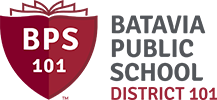5:170-AP1 – Copyright Compliance
5:170-AP1 – Copyright Compliance
These guidelines help staff members determine if they may use non-original work freely or whether permission is needed to use or copy it. Whenever a staff member is uncertain, has questions, or needs permission from a copyright-owner to use or copy a work, he or she should contact the Superintendent or designated copyright compliance officer. Appendix 1 is a Fair Use Assessment Factors Checklist. Appendix 2 contains use resources available online.
1. Is the work copyright protected? A “no” means you may use the work freely; a “yes” or uncertain answer means you should proceed with the second query.
a. No, if it is in the public domain.
b. No, if it is a U.S. Government publication
c. No, if it is an idea or method described in copyrighted work.
d. The presence of a copyright notice is not determinative.
e. Yes, almost all other works.
2. Do you want to exercise one of the copyright owner’s exclusive rights? A “yes” or uncertain answer means you should proceed with the third query.
a. Yes, if you plan to copy the work.
b. Yes, if you plan to use the work as the basis for a new work.
c. Yes, if you plan to electronically distribute or publish copies.
d. Yes, if you plan to perform music or drama, recite prose or poetry, or if you plan to play a video and/or audio digital or tape recording or a CD-ROM or DVD.
e. Yes, if the plan is to publicly display the work.
3. Does your planned use of the work require the copyright owner’s permission? A “no” means you may use the work, provided that any copies contain the copyright notice as it appears in the original work; a “yes” or uncertain answer means you should contact the Superintendent or designated copyright compliance officer.
a. No, if your planned use of printed work is within the fair use exception as defined in17 U.S.C. §107. See Appendix 1.
b. No, if your planned use of the work is within the library’s special rules exception as defined in 17 U.S.C. §108.
• A library may make a single copy containing the copyright notice for the purpose of archiving lost, stolen, damaged, or deteriorating works.
• A library may make a single copy containing the copyright notice for a student or staff member at no more than the actual cost of photocopying, provided that the library finds that the copyrighted work cannot be obtained elsewhere at a fair price.
c. No, if your planned use of the work is within the educational performances and displays exception as defined in 17 U.S.C. §110.
Performances by teachers or students are permitted as part of a teaching activity in a classroom or instructional setting. All other performances require permission from the copyright owner.
d. No, if you plan to use it in an overhead or opaque projector for instructional purposes.
e. No, if you plan to copy and use music for academic purposes, other than performance.
f. Yes, notwithstanding the above, if you plan to create anthologies, compilations, or collective works.
g. Yes, notwithstanding the above, if copies will be consumed during the course. Consumable works include: workbooks, exercises, standardized tests, test booklets, and answer sheets.
h. Yes, notwithstanding the above, if you plan to substitute copies for the purchase of the work; likewise, if you yearly copy the same item.
i. You must receive permission from the Superintendent or designated copyright compliance officer before showing the off-air recording of television programs, video rentals, or videos purchased for home use. You must follow any applicable license agreements.
j. You must receive permission from the Superintendent or designated copyright compliance officer before using any non-District owned software, CD-ROM or DVD products, and/or downloadable files in District owned equipment. No one may install or download any program on District owned equipment without the Superintendent or designee’s permission.
k. You must follow licensing agreements applicable to District owned software and CD-ROM or DVD products.
• Licensing agreements with the manufacturer and vendor shall be followed.
• Staff members shall take reasonable precautions to prevent copying or the use of unauthorized copies on school equipment, to avoid the installation of privately purchased software on school equipment, and to avoid the use of single copy software or CD-ROM products across a network with multiple users unless the applicable license agreement permits.
• A back-up copy shall be purchased for use as a replacement when a program is lost or damaged. If the vendor is not able to supply such, the District shall make a back-up program in accordance with the terms of the applicable licensing agreement or 17 U.S.C. §117.
Appendix 1: Copyright Fair Use Assessment Factors Checklist
Purpose and Character of Use of Copyrighted Work
Use this checklist to analyze whether material falls under the fair use doctrine. Factors favoring fair use will generally indicate that material may be used without seeking permission from the copyright owner. Factors opposing fair use require permission to reprint or adapt the material from the copyright owner. If a copyright owner is known, always request permission before using any material.
| Favoring Fair Use | Opposing Fair Use |
| ☐ Teaching | ☐ Commercial activity – gain of financial rewards from (sic) use, e.g. sale of goods, services; advertising; fundraising, etc. |
| ☐ Research Scholarship/Academics | ☐ Profiting from use |
| ☐ Nonprofit educational institution | ☐ Bad-faith behavior, e.g. misrepresentation of intended use |
| ☐ Criticism | ☐ Denying credit to original author or artist |
| ☐ Comment | ☐ Entertainment |
| ☐ News reporting that is fact intensive | ☐ News reporting with a new perspective or creative flair |
| ☐ Used to create something different and new | ☐ Making a stylized version that retains the core elements of the original work |
| ☐ Restricted access given | |
| ☐ Parody |
Name of Copyrighted Work Used
| Favoring Fair Use | Opposing Fair Use |
| ☐ Published Work | ☐ Unpublished Work |
| ☐ Factual or non fiction based | ☐ Highly creative work (art, music, novel) |
| ☐ Out of print work | ☐ Fiction |
Amount of Substantiality of Copyrighted Work Used
| Favoring Fair Use | Opposing Fair Use |
| ☐ Small amount used | ☐ Large portion or whole work used |
| ☐ Portion used not central or significant to entire work | ☐ Portion used is the heart of the work |
Impact on Market of Copyrighted Work (often viewed as the most important factor)
| Favoring Fair Use | Opposing Fair Use |
| ☐ User owns lawfully acquired/purchased copy | ☐ Use could supplant original author sale for copyrighted work |
| ☐ One or few copies made | ☐ Significantly impairs the market/potential market of copyrighted work or derivative work |
| ☐ No significant effect on market/potential market for copyrighted work | ☐ Reasonable available licensing mechanisms |
| ☐ No similar product marketed by copyright holder | ☐ Affordable permission to use copyrighted work available |
| ☐ No ready licensing or permission mechanism | ☐ Numerous copies made |
| ☐ Made accessible on the internet or elsewhere | |
| ☐ Repeated or long-term use |
In addition to the defense of fair use, a user of a work may also raise the argument that the expression at issue is not protectable because it is composed of scènes à faire, which are elements of work that are so rudimentary, commonplace, standard or unavoidable that they do not distinguish one work in a class from another, and therefore receive no copyright protection. Examples of scènes à faire might include:
- Story elements, e.g., an adventure story involving a wizened old mentor to a young upstart
- A horror story featuring an unstoppable killer
- Cliché phrases such a ruby red lips
A related concept is the merger doctrine, which provides that if an idea can be expressed in only a few limited ways, the expression merges with the idea and cannot be protected by copyright. Examples of merger may be:
- An order form for a certain type of product
- The architectural layout of a one-bedroom apartment
- Sweepstakes rules
Like questions of fair use, these issues are likely to be factually intensive and their application can be highly subjective. Consult the board attorney for guidance.
Adapted with permission from Steven Mandell; © 2021 Mandell Menkes LLC. All Rights Reserved.
Appendix 2: Copyright Resource List
U.S. Copyright Office www.copyright.gov
U.S. Copyright Office Fair Use Index www.copyright.gov/fair-use/
Copyright Act, as amended, Title 17 of the United States Code www.copyright.gov/title17/92chap1.html
Copyright Term and the Public Domain in the United States; updated every Jan. 1. copyright.cornell.edu/resources/publicdomain.cfm Cornell UniversityCopyrightInformationCenter
Circular 21: Reproductions of Copyrighted Works by Educators and Librarians www.copyright.gov/circs/circ21.pdf U.S. Copyright Office
Agreement on Guidelines for Classroom Copying in Not-For-Profit Educational Institutions with Respect to Books and Periodicals (see Circular 21: Reproductions of Copyrighted Works by Educators and Librarians, page 6) www.copyright.gov/circs/circ21.pdf
TEACH Act (Technology, Education and Copyright Harmonization Act of 2002) www.copyright.gov/legislation/pl107-273.pdf
The TEACH Act: New roles, rules and responsibilities for academic institutions www.copyright.com/wp-content/uploads/2015/04/CR-Teach-Act.pdf
Copyright: Distance Education and the TEACH Act http://www.ala.org/advocacy/copyright/teachact/distanceeducation
Copyright Crash Course: TEACH ACT https://guides.lib.utexas.edu/copyright/teachact The University of Texas Libraries
WIPO (World Intellectual Property Organization) www.wipo.org
MPAA (Motion Picture Association of America) www.mpaa.org
Permissions Group (Negotiation of rights and fees for the use of copyrighted material in and for all media) www.permissionsgroup.com
SIIA (Software & Information Industry Association) www.siia.net/
CCC Copyright Clearance Center (Copyright permission for publications worldwide) www.copyright.com
ASCAP (American Society of Composers, Authors and Publishers) www.ascap.com
BMI (Broadcast Music Inc.) www.bmi.com
SESAC, Inc. (A performing rights organization) www.sesac.com
The Harry Fox Agency, Inc. (Licensing agency for U.S. music publishers) www.harryfox.com
The Authors Registry (Maintains an extensive directory of authors) www.authorsregistry.org
Copyright & Fair Use (Stanford University Libraries) fairuse.stanford.edu/
Copyright Society of the USA https://www.csusa.org
The Copyright (Copyright Registration and Information Resource) www.benedict.com
Crash Course in Copyright University of Texas Libraries copyright.lib.utexas.edu/
Kohn on Music Licensing www.kohnmusic.com
National Writers Union www.nwu.org
Poets & Writers, Inc. www.pw.org
Project Gutenberg (Internet’s oldest producer of FREE electronic books (eBooks or eTexts)) www.gutenberg.org
WATCH: Writers and Their Copyright Holders The University of Texas at Austin norman.hrc.utexas.edu/watch/
Date Adopted: September 22, 2015
Date Amended: August 24, 2021



